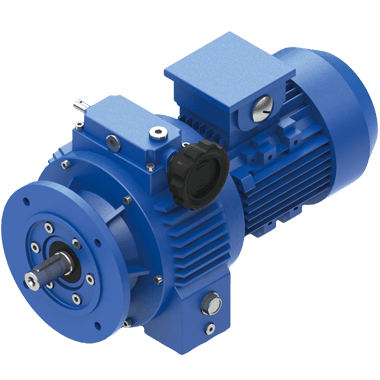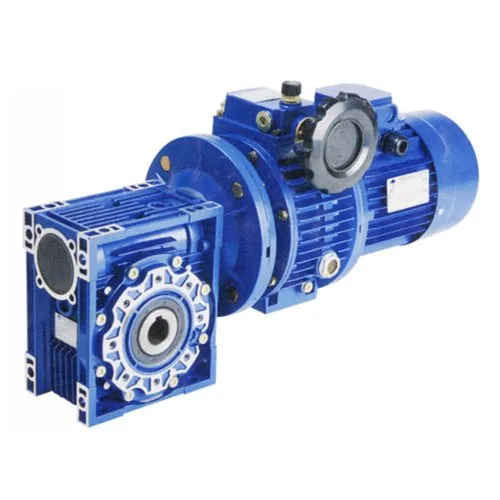Product Description
You can choose the 1 type that you need form these product introction.
If you have any question,please contact me.
HangZhou CHINAMFG Machinery Co.,ltd is a company specialized in research, manufacture and service of speed gearbox. Ever since establishment, we have been persisting in technical innovation, advancing the techonology to our products while maintaining our strict quality controls. It is the reason that our products branding ”Xihu (West Lake) Dis.n” have enjoyed such successful global sales.
At present, our company mainly supplies 5 series products as RV worm gearbox, UDL series speed variator,PC series helical gear unit,G3 helical geared motor and SRC helical gearbox. The products are widely applied in the mechanical equipment field such as food and beverage,cement,package,chemical and dyeing, rubber and plastic, CNC machine tool,etc.
Our products have been processed ISO 9001 Quality System Certification and exported to Italy,Spain,Britain,Poland,Turkey.The USA and other European countries,earn the good reputation with our outstanding quality and service.
Customers first,customers satisfaction, excellent after sale service and incessant innovation are our tenet and motto. We will go all out to provide all the customers with high quality and service.
| Application: | Motor, Electric Cars, Motorcycle, Machinery, Marine, Toy, Agricultural Machinery, Car |
|---|---|
| Hardness: | Hardened Tooth Surface |
| Installation: | Vertical and Horizontal |
| Samples: |
US$ 69.9/Piece
1 Piece(Min.Order) | Order Sample |
|---|
| Customization: |
Available
|
|
|---|
.shipping-cost-tm .tm-status-off{background: none;padding:0;color: #1470cc}
|
Shipping Cost:
Estimated freight per unit. |
about shipping cost and estimated delivery time. |
|---|
| Payment Method: |
|
|---|---|
|
Initial Payment Full Payment |
| Currency: | US$ |
|---|
| Return&refunds: | You can apply for a refund up to 30 days after receipt of the products. |
|---|

What safety considerations are associated with the installation and operation of variator motors?
When installing and operating variator motors, several safety considerations should be taken into account. Here’s a detailed explanation:
Variator motors, like any other electrical or mechanical equipment, require proper installation, operation, and maintenance to ensure safe and reliable performance. Here are some key safety considerations associated with the installation and operation of variator motors:
- Electrical Safety: Variator motors are powered by electricity, so it’s crucial to follow electrical safety guidelines during installation and operation. This includes ensuring proper grounding of the motor and adhering to local electrical codes and regulations. It’s important to have a qualified electrician handle the electrical connections and ensure that the motor is properly wired and protected from electrical hazards.
- Mechanical Safety: Variator motors often have moving parts and may be connected to mechanical systems. During installation, it’s necessary to ensure that the motor is securely mounted and aligned with the driven equipment. Adequate guarding should be provided to prevent accidental contact with moving parts, such as belts, pulleys, or couplings. Properly sized and rated couplings, belts, and other mechanical components should be used to ensure safe and reliable operation.
- Overload Protection: Variator motors should be protected against overloading. Overloading can cause overheating, reduced motor life, and potential safety hazards. It’s important to select a motor with the appropriate power rating for the application and ensure that it’s not subjected to excessive loads. Additional overload protection devices, such as thermal protectors or overload relays, may be necessary to safeguard the motor and prevent damage or hazards.
- Heat Dissipation: Variator motors can generate heat during operation, especially at higher speeds or under heavy loads. Sufficient ventilation and cooling should be provided to dissipate the heat effectively. Adequate clearance around the motor and proper ventilation in the motor enclosure or installation area can help prevent overheating and ensure safe operation. It’s important to follow the manufacturer’s recommendations regarding cooling and ventilation requirements.
- Environmental Considerations: The installation and operation of variator motors should consider the environmental conditions in which they will be used. For example, if the motor will be exposed to moisture, dust, or corrosive substances, appropriate measures should be taken to protect the motor against these elements. This may include using sealed motor enclosures or installing the motor in a suitable protective housing. Additionally, if the motor will be used in hazardous locations, such as areas with flammable gases or dust, it must comply with the applicable safety standards and requirements.
- Proper Maintenance: Regular maintenance is essential for the safe and reliable operation of variator motors. This includes periodic inspection, cleaning, and lubrication of the motor and its components. It’s important to follow the manufacturer’s maintenance guidelines and schedule to ensure that the motor remains in good working condition. Any signs of wear, damage, or abnormal operating conditions should be addressed promptly to prevent safety risks.
- Training and Awareness: Proper training and awareness of the operators and maintenance personnel are crucial for safe operation and maintenance of variator motors. Operators should be knowledgeable about the motor’s operation, control features, and emergency procedures. Maintenance personnel should be trained to perform maintenance tasks safely and be aware of potential hazards associated with the motor. Regular safety training and refresher courses can help promote a safe working environment.
It’s important to note that the specific safety considerations may vary depending on the motor model, application, and local regulations. Therefore, it’s recommended to consult the manufacturer’s documentation and guidelines, as well as relevant safety standards, to ensure that all necessary safety precautions are followed during the installation and operation of variator motors.

What are the key components and technologies used in modern variator motors?
Modern variator motors incorporate several key components and technologies to enable their variable speed and adjustable torque capabilities. Here’s a detailed explanation:
1. Motor Stator and Rotor: The motor stator and rotor are fundamental components of variator motors. The stator consists of a stationary set of windings that generate a rotating magnetic field when energized. The rotor, typically mounted on the motor shaft, contains conductive bars or coils that interact with the magnetic field and produce mechanical rotation.
2. Power Electronics: Variator motors rely on power electronics components, such as inverters or variable frequency drives (VFDs), to control the motor’s speed and torque. These devices convert the incoming AC power supply into the appropriate voltage and frequency required by the motor. Power electronics also enable smooth and precise adjustment of motor operating parameters, facilitating variable speed operation.
3. Sensors and Feedback Devices: Variator motors often incorporate sensors and feedback devices to monitor motor performance and provide input for control algorithms. Common sensors used include speed sensors, position sensors, temperature sensors, and current sensors. These sensors provide real-time information about the motor’s operating conditions, allowing the control system to adjust motor parameters accordingly.
4. Control Algorithms and Software: Modern variator motors employ sophisticated control algorithms and software to regulate motor speed, torque, and other operating parameters. These algorithms process the sensor data and generate control signals to adjust the power electronics and optimize motor performance. Advanced control techniques, such as field-oriented control (FOC) or model predictive control (MPC), may be used to achieve precise and efficient motor operation.
5. Variable Speed Drive Mechanisms: Variator motors employ various mechanisms to achieve variable speed operation. These mechanisms can include adjustable pulley systems, belt drives, gearboxes, or electronic control of motor winding configurations. The specific mechanism depends on the motor’s design and application requirements.
6. Efficiency-Enhancing Technologies: Modern variator motors incorporate technologies aimed at improving energy efficiency and reducing losses. These technologies may include the use of high-efficiency motor designs, such as permanent magnet motors or synchronous reluctance motors. Additionally, advanced insulation materials, optimized motor cooling systems, and reduced friction bearings can contribute to enhanced motor efficiency.
7. Communication and Networking: Some variator motors feature communication and networking capabilities to enable integration with industrial automation systems or the Internet of Things (IoT). These capabilities facilitate remote monitoring, control, and data exchange, allowing for enhanced motor performance analysis, predictive maintenance, and system integration.
8. Safety and Protection Features: Modern variator motors incorporate safety and protection features to safeguard the motor and the surrounding equipment. These features may include overcurrent protection, overvoltage protection, short-circuit protection, thermal protection, and fault detection mechanisms. These measures ensure safe and reliable operation and help prevent damage to the motor in case of abnormal operating conditions.
The specific components and technologies used in variator motors can vary depending on the motor’s type, design, and application requirements. Motor manufacturers continuously innovate and incorporate advancements in materials, electronics, and control systems to improve motor performance, efficiency, and reliability.

What are the advantages of using variator motors in industrial settings?
Variator motors offer several advantages when used in industrial settings. Here are some key benefits:
- Flexible Speed Control: One of the primary advantages of variator motors is their ability to provide flexible speed control. Unlike traditional motors that operate at a fixed speed, variator motors allow for adjustable speed settings. This flexibility enables industrial processes to be optimized for different operational requirements, such as varying loads, different stages of production, or specific process demands.
- Energy Efficiency: Variator motors can help improve energy efficiency in industrial settings. By adjusting the motor speed to match the required output, these motors can avoid the energy losses associated with running at fixed speeds. Operating the motor at lower speeds when the full speed is not necessary can lead to significant energy savings. This energy efficiency not only reduces operational costs but also contributes to sustainability and environmental conservation efforts.
- Precise Process Control: The ability to finely tune the speed of variator motors enables precise process control in industrial settings. Processes that require accurate manipulation of speed, such as mixing, blending, and conveyance, can benefit from variator motors. The adjustable speed allows for better control over product quality, consistency, and production rates.
- Adaptability to Changing Loads: Variator motors are well-suited for applications that experience varying loads. The adjustable speed control allows the motor to respond to changes in load conditions, compensating for fluctuations and ensuring optimal performance. This adaptability is particularly advantageous in industries where load variations are common, such as material handling, conveyor systems, and production lines with varying throughput requirements.
- Reduced Mechanical Stress: In some industrial processes, sudden starts or stops and rapid speed changes can subject mechanical components to excessive stress, leading to premature wear and tear. Variator motors can mitigate this issue by providing smooth and controlled acceleration and deceleration. The ability to gradually ramp up or down the motor speed reduces mechanical stress on the system, prolonging the lifespan of equipment and minimizing maintenance needs.
- Improved Productivity: Variator motors can contribute to improved productivity in industrial settings. The adjustable speed control allows for process optimization, reducing cycle times and enhancing overall efficiency. By matching the motor speed to the specific requirements of each stage of production, variator motors can help streamline operations and increase productivity.
These advantages make variator motors a valuable choice for a wide range of industrial applications. Their flexibility, energy efficiency, precise control, adaptability, and productivity enhancements contribute to improved performance and cost-effectiveness in industrial settings.


editor by CX 2023-11-17